The web is ever-evolving, and front-end developers need to stay ahead of the curve. But with so many frameworks, libraries, and tools emerging each year, which ones are worth your time? We’ve scoured the trends and handpicked the top 10 front-end technologies poised to dominate 2025. From performance-boosting advancements to revolutionary design approaches, get ready to unlock the next level of user experiences and propel your development skills to new heights!
What Are Front End Technologies in Web Development?
Ever wondered how websites come alive with colorful layouts, clickable buttons, and smooth animations? The answer lies in frontend technologies, the building blocks that shape everything you see and interact with on the web. Hence, a website is basically like a house. The backend is the foundation and structure, hidden from view. But the front end is like the paint, furniture, and everything you experience when you walk through the door. It makes websites beautiful, and user-friendly and works across different devices.
The basic tools in this toolbox are HTML, which outlines the content and structure; CSS, which adds colors and styles; and JavaScript, which brings everything to life with animations and interactivity. But it’s not just those three! Frameworks like React and Angular help build complex websites efficiently, and libraries like Bootstrap offer ready-made components for faster development. Moreover, tools like Webpack organize code, and Figma lets designers work together easily.
By understanding these technologies, you appreciate the effort behind every website you visit. Whether you’re a developer or just curious, exploring the front end unlocks a world of innovation and creativity!

Benefits of Frontend Technologies
Gone are the days when front-end development was simply about aesthetics. Today’s front end technologies power dynamic, interactive experiences that shape user engagement and drive business success. But what exactly are the benefits that make these advancements so exciting? Let’s dive into the key advantages:
- Enhanced user experience: Modern frontend tools empower you to create intuitive interfaces that are a joy to use. Hence, interactive elements, animations, and micro-interactions keep users engaged and coming back for more. Consider the difference between a static website and one that smoothly adapts to user actions—it’s like night and day in terms of engagement.
- Build faster: Modern frontend frameworks and libraries provide pre-built tools that can speed up the time spent creating websites. Moreover, frontend technologies allow developers to focus on building unique features and functionality rather than reinventing the wheel.
- Improved code quality: Frontend frameworks make programmers follow acceptable practices and coding standards. Hence, this leads to more efficient code that is clean and easy to maintain.
- Better software experience: By using great tools like responsive design and cross-browser compatibility libraries, programmers can ensure that their website is more responsive, enjoyable, and reaches more people.
- Search engine optimization: A well-structured and good-looking front-end code of any website can contribute to better search engine rankings. This is made possible because of fast loading times, the presence of good navigation, and the overall user experience, which increases the amount of time visitors stay on a site. All of these are noted by search engines.
By using the power of frontend technology, you can create engaging, accessible, and super-fast experiences that win over your audience and take your business to the next level. So, don’t underestimate the front end—it’s the key to success in today’s digital world.
10 Most Popular Front End Technologies
The top 10 most popular front-end web development technologies are constantly evolving to create interactive user experiences. To keep the list minimal, we’ll focus on:
1. HTML

Even though JavaScript gets a lot of attention these days, HTML is still the most important front-end tech for building websites. It’s like the foundation of a house—you can’t see it, but it’s what holds everything up. HTML tells the web browser how to organize all the different parts of a website, like text, images, and videos. Hence, without HTML, websites would just be a jumbled mess!
Features of HTML:
- Structure Your Web Pages: HTML helps you lay out the structure of web pages using elements like headings, paragraphs, and links.
- Embed Media: Easily add images, videos, and audio to your site.
- Forms for Interaction: Create forms for user inputs, such as contact information.
- Semantic Elements: Use elements that describe their meaning clearly, like <article>, <footer>, and <nav>, making your website more accessible.
2. CSS
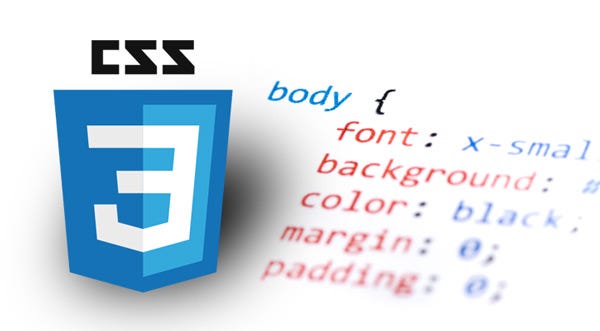
CSS, also referred to as Cascading Style Sheets, is a front-end web technology used to specify how web pages are presented or styled, giving them an intuitive and lively flavor. Hence, CSS is the foundational block of building UI. It’s like the fancy dress that makes the web beautiful. In its pure form, it is still very powerful and relevant, having survived for the past 27 years of its existence.
CSS features:
- Styling: Change how your website looks with colors, fonts, and spacing.
- Layouts: Arrange your content with Flexbox and Grid, making complex designs easier.
- Responsive Design: Make your site look great on any device by adjusting the layout based on screen size.
- Animations: Add movement to your website with simple animations and transitions.
3. JavaScript
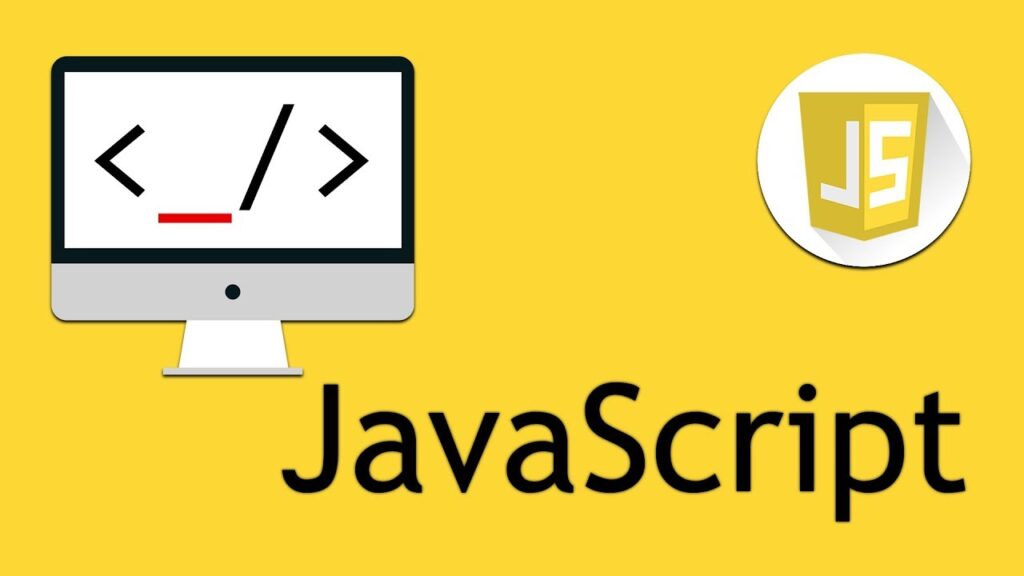
JavaScript is the magic behind interactive websites, giving them life with dynamic features. But it’s not just for websites. This flexible language also powers mobile apps, runs on servers, and is even used in game development. Moreover, it’s everywhere, making digital experiences more engaging.
Features of JavaScript:
- Interactivity: Add interactive elements to your site, like dropdown menus and modal popups.
- Data Handling: Manage and display data fetched from the web, updating content without reloading the page.
- Control Web Elements: Dynamically change website content and styles in response to user actions.
- Animations and Effects: Create and control animations and visual effects on the webpage.
You may also like: Java vs JavaScript: Understanding the Differences
4. React

Also known as React.js, a popular JavaScript framework built in 2010 to solve the problem of real-time feed refreshing. This frontend technology has not only made life easier for website users; it has also helped programmers so much that it has become one of the most used technologies in frontend web development.
Key React features:
- Component-Based: Build encapsulated components that manage their state, then compose them to create complex UIs.
- Fast Rendering: Use the Virtual DOM for efficient updates and rendering, making your app faster.
- Hooks: Easily use state and other React features in functional components without classes.
- Rich Ecosystem: Access a vast library of components and tools for routing, state management, and more.
5. Bootstrap
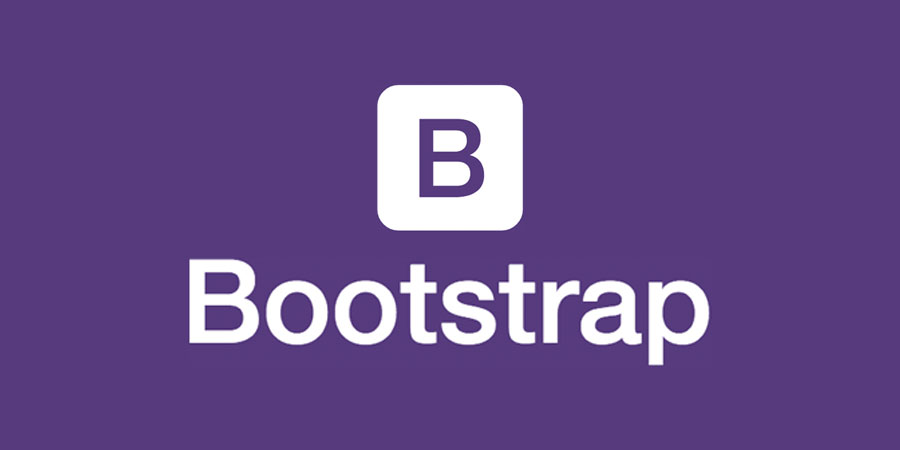
Bootstrap is a popular, open-source web frontend technology, built with HTML, CSS, and JavaScript, helps you craft ultra-responsive, mobile-first websites. It intelligently and automatically identifies different devices, instantly adapting your pages without manual setup. Moreover, no coding headaches! Bootstrap empowers anyone, regardless of coding knowledge, to build polished websites. Hence, with readily available components like buttons, menus, and forms, plus easy installation and extensive resources, you’re set to go!
Features of Bootstrap:
- Responsive Design: Automatically adjust your website’s layout for different screen sizes.
- Pre-designed Components: Use pre-made components like buttons, navbars, and forms to speed up design.
- Customizable: Easily theme Bootstrap components to match your design requirements.
- Grid System: Organize your content with a flexible grid system that supports up to 12 columns.
6. Vue.js
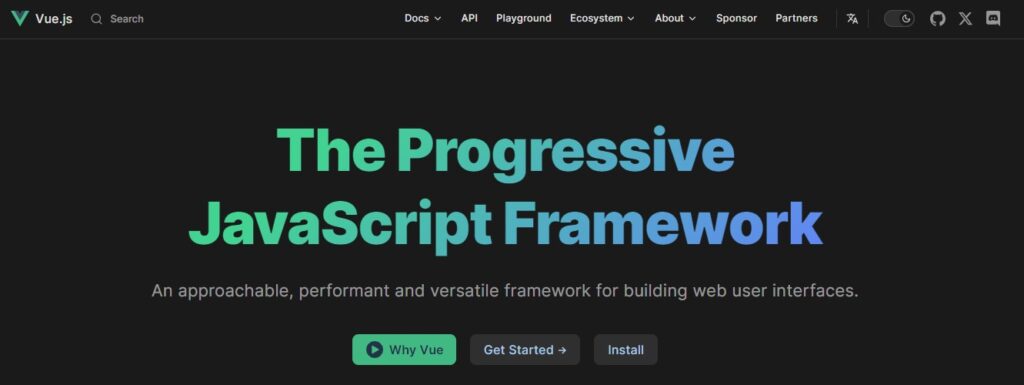
Vue runs on JavaScript, and it’s used to build very interactive web interfaces. Its lightweight capabilities make it suitable for building speed-reliant websites in an era when everyone is used to fast technology.
Features of Vue.js:
- Reactive Data Binding: Automatically update the webpage when your application data changes.
- Easy to Learn: Simpler syntax and an approachable learning curve compared to other frameworks.
- Versatile: Write simple page enhancements or build complex single-page applications (SPAs).
- Efficient Transitions: Create smooth transitions for a more dynamic user experience.
7. Flutter

Imagine building beautiful apps for your phone, computer, or even the web, all with just one set of code! Flutter makes it happen. This open-source toolkit from Google lets you design stunning interfaces with reusable building blocks and write code that adapts to different devices. Plus, you can see changes instantly as you work, making development a breeze.
Features of Flutter:
- Cross-Platform Development: Write once, and run on both iOS and Android with a native performance.
- Hot Reload: Instantly see changes during development without restarting your app.
- Rich Widget Library: Use a comprehensive set of widgets to create complex, customizable UIs with a native look and feel.
- Performance: High-performance app experience thanks to Dart compiling to native code.
8. HTML5 Boilerplate

Starting a new website? Skip the setup and jump right in with HTML5 boilerplate! This pre-built template equips you with the essentials for modern web development. Think responsive design, clean HTML code, and even built-in tricks for faster loading times. It’s like having a head start on your project.
Features of the HTML5 boilerplate:
- Web Standards: Start with a template that follows best practices and modern web standards.
- Cross-Browser Compatibility: Ensure your site works well across all modern browsers.
- Performance Optimizations: Includes settings for faster page load times, like compressing CSS and JavaScript.
9. Next.js
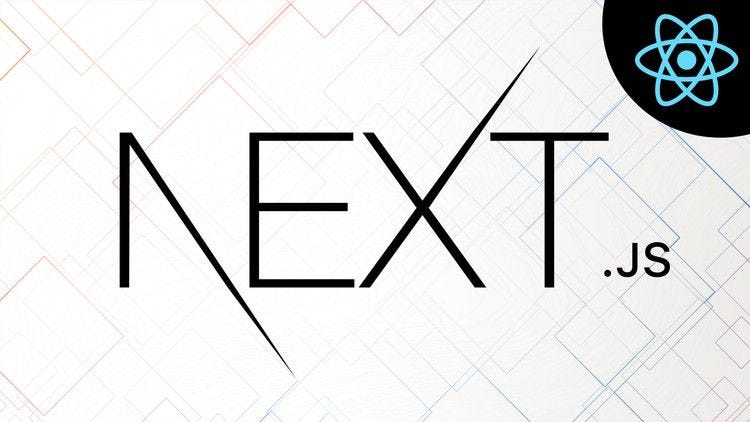
Imagine building super-fast websites and apps that feel smooth and seamless, like magic! Next.js is a special framework for React that helps you achieve just that. It takes care of a lot of the technical stuff behind the scenes, letting you focus on what matters most—creating an amazing user experience.
Features of Next.js:
- Server-Side Rendering: Render pages on the server for faster load times and better SEO.
- Static Site Generation: Pre-render pages at build time for lightning-fast loading without a server.
- File-Based Routing: Easily create routes based on your file structure without extra configuration.
- API Routes: Build API endpoints within Next.js for a unified project structure.
10. jQuery
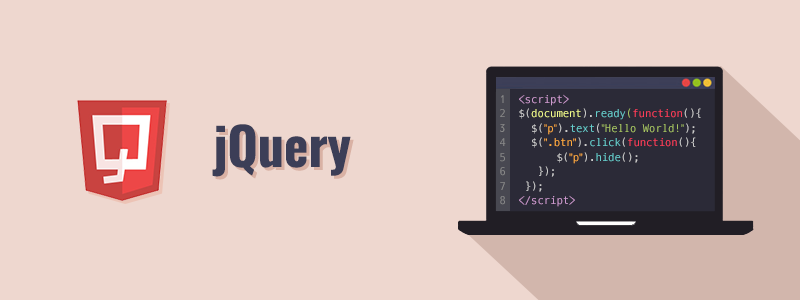
jQuery is like a toolbox for making websites fun and easy to use. It’s a popular JavaScript library that helps add cool animations, pop-ups, and effects quickly. It makes web development easier by letting developers change website content, manage events, and make web requests easily. This tool is great for creating lively web pages without much hassle.
jQuery features:
- Simplify DOM Manipulation: Easily select and manipulate webpage elements.
- Event Handling: Attach events to your webpage elements for interactive features.
- Ajax Calls: Fetch data from the server asynchronously without reloading the page.
- Cross-Browser Support: Write code that is consistent across all major browsers without dealing with browser-specific quirks.
You may also like: Angular vs jQuery – Difference Between Angular and jQuery
How to Choose the Right Frontend Technology
Building a sleek, interactive website or app requires the right tools. In the ever-evolving world of front-end development, choosing the perfect technology can feel like navigating a maze. But fear not, intrepid developer! With a clear understanding of your project’s needs and your team’s strengths, you can make an informed decision that sets your project up for success.
Project Priorities:
- Complexity: Is your project a simple landing page or a full-blown single-page application? Complex projects might benefit from structured frameworks like Angular, while simpler ones might thrive with the flexibility of React or Vue.js.
- Performance: Does lightning-fast speed matter? Consider libraries like Preact or Svelte for their optimization power.
- Team Expertise: Leverage your team’s existing skills! Choosing a technology they’re comfortable with can speed up development and reduce learning curves.
Technology Considerations:
- Community & Support: A large and active community means easier access to help and resources. Frameworks like React and Angular boast vibrant communities, while newer options might have smaller but dedicated support circles.
- **Documentation & Learning Curve: **Clear and comprehensive documentation is crucial for smooth development. Evaluate the learning curve associated with each technology – some, like Vue.js, are known for their gentle slope, while others might require more time to master.
- Scalability & Longevity: Is your project built to last? Choose a technology with a stable future and the ability to adapt to growing needs. Consider the framework’s track record and community engagement to gauge its long-term viability.
Remember, the right technology is the one that aligns perfectly with your project’s goals and your team’s capabilities. Do your research, and experiment, and don’t be afraid to seek guidance from experienced developers. With the right approach, you’ll find the perfect front-end technology to bring your vision to life!
Integrating ZEGOCLOUD SDK/API with Front End Technologies
Imagine seamlessly embedding interactive video chat, live streaming, and in-app messaging into your web or mobile app. That’s the power of ZEGOCLOUD, a robust toolkit empowering businesses and developers to elevate their front-end experiences with real-time audio and video functionalities.
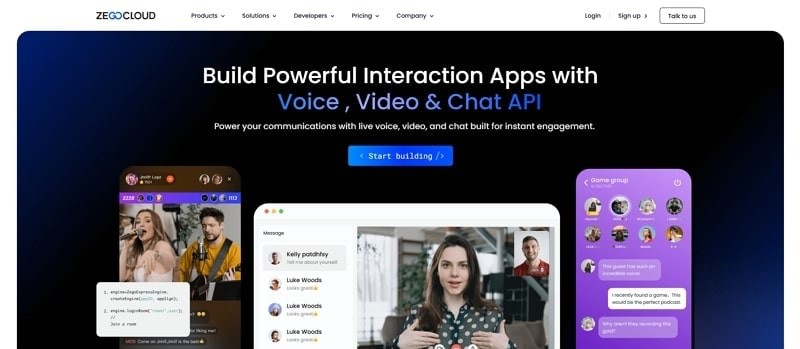
ZegoCloud excels by providing a comprehensive suite of SDKs for real-time communication, including video call SDK, voice call SDK, live streaming SDK, and app chat SDK. Key highlights include:
- Global Reach: No matter where your users are, ZEGOCLOUD’s global network keeps things lag-free and crystal clear. Even during peak times, it can handle the crowd without a hitch.
- Flexible Customization: Want a video chat with a whiteboard? Or a live stream with polls? ZEGOCLOUD lets you pick and choose features, control layouts, and even share screens. It’s your app, your way.
- Security You Can Trust: ZEGOCLOUD takes data protection seriously. Think bank-level encryption and access controls to keep your conversations private and secure.
- Works Everywhere: Whether your users are on the web, mobile, or desktop, ZEGOCLOUD speaks their language. Its SDKs work with popular tools like JavaScript, React Native, and Flutter, so you can reach everyone, seamlessly.
Ready to add real-time engagement to your app? ZEGOCLOUD is easy to use, scales like a champ, and has tons of features. It’s the perfect partner for front-end developers who want to take their creations to the next level.
Conclusion
Thus, having delved into the forefront of front-end technologies for 2025, the pivotal question remains: Which will claim the title of your go-to choice?
Bear in mind, that the quest for the perfect front-end technology doesn’t follow a universal blueprint. It demands a thoughtful consideration of your specific project requirements, your proficiency level, and the robust support ecosystem surrounding each technology. Prioritize agility, adaptability, and the capacity for growth—these are the pillars supporting a decision that stands the test of time. The premier front-end technology is, ultimately, the one that equips you to craft unparalleled user experiences. So, make your selection with care, approach your coding with assurance, and brace yourself to forge something truly extraordinary with front-end technologies.
And hey, don’t forget ZEGOCLOUD! If you need to add real-time audio, video, or chat features to your frontend masterpiece, our easy-to-integrate SDKs and APIs have your back. Sign up to join the new wave of communication!

Read more:
FAQ
Q1: Is .NET a front-end technology?
No, .NET is primarily a backend framework developed by Microsoft. It is used to build server-side applications, APIs, and web services. However, there are some front-end components like Blazor within the .NET ecosystem that enable building interactive web UIs using C# instead of JavaScript.
Q2: Is HTML a front-end technology?
Yes, HTML (HyperText Markup Language) is a core front-end technology. It provides the basic structure and content of web pages, defining elements like headings, paragraphs, images, and links that are displayed in the browser.
Q3: Is SQL front-end or backend?
SQL (Structured Query Language) is a backend technology. It is used for managing and querying data stored in databases, operating behind the scenes to support the functionality of web or software applications.
Let’s Build APP Together
Start building with real-time video, voice & chat SDK for apps today!










